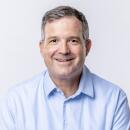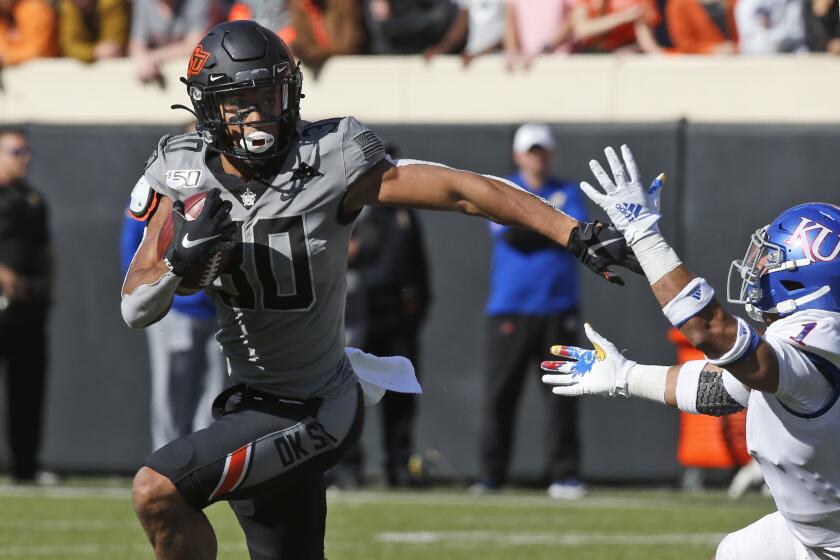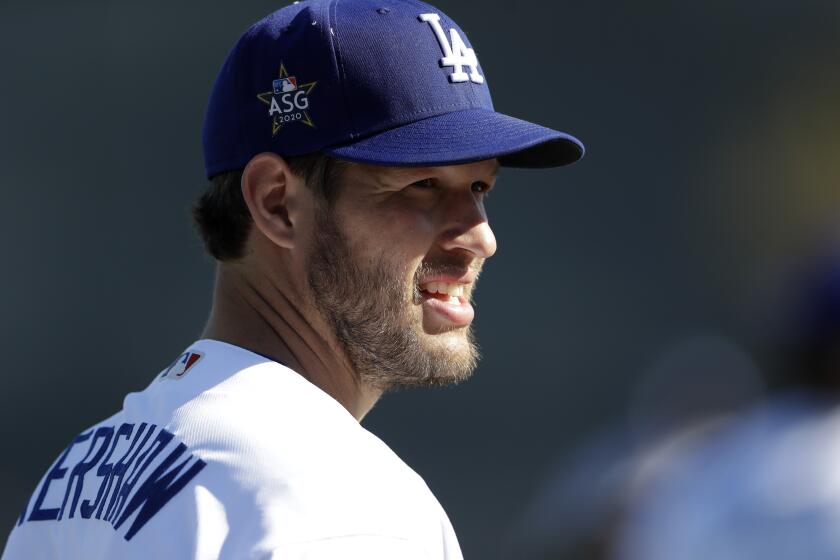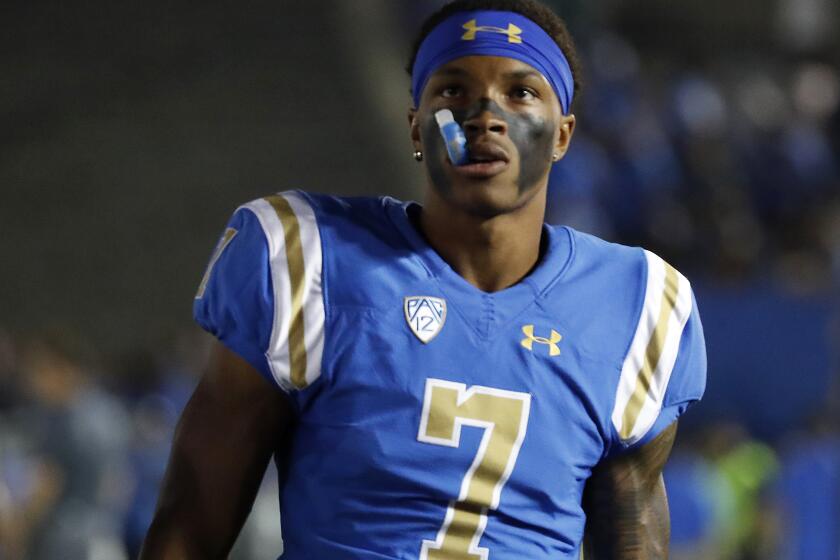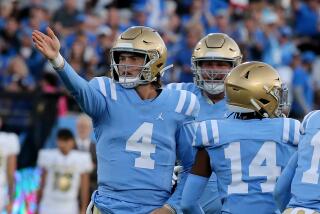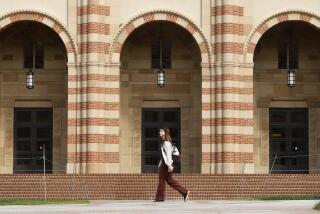UCLA athletes set to voluntarily return to campus on unfamiliar terms
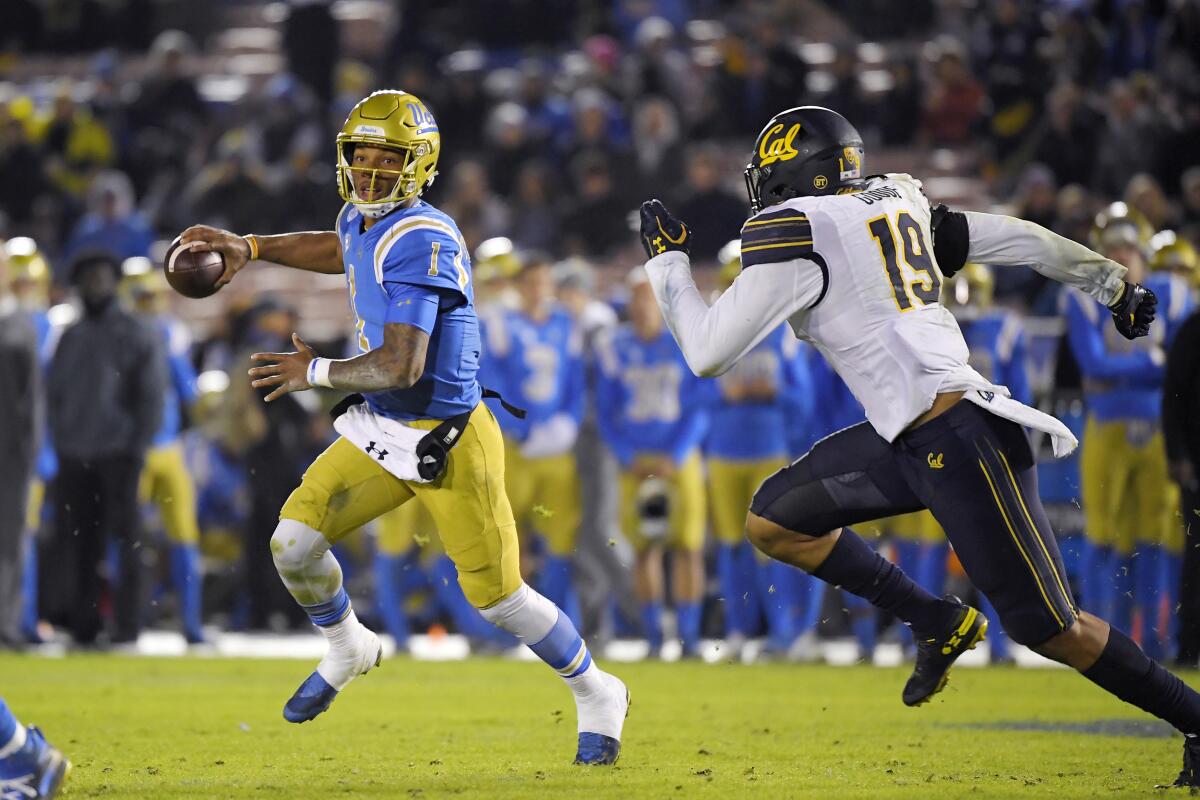
- Share via
Like Miss Havisham’s clocks, time can seem frozen on the UCLA campus. A manual scoreboard at the school’s tennis center remains set up for a match that never took place because of the COVID-19 pandemic.
Everything else might seem unfamiliar when UCLA athletes start to return Sunday.
Entering athletic facilities will involve lining up and standing at least six feet apart. Temperatures will be checked by a touch-less thermometer and anyone whose reading is 100.4 degrees or higher will be barred from entrance. Entry times will be logged as part of contract tracing. Dispensers will squirt out hand-sanitizing liquid.
Those measures are just part of the school’s plan for a voluntary return to campus that officials publicly unveiled Saturday during a Zoom meeting with reporters. Bringing athletes back is the first of a four-phase plan that, if things go well, would progress to conditioning, team practices and games, with local health officials and athletic governing bodies needing to approve the final two phases at a later date before they can commence.
America’s cultural reckoning means college athletes and recruits can make demands and ask big programs a big question: What will you stand for?
“The overriding goal and theme to all of this is trying to do this in a way that’s safe,” said David McAllister, UCLA’s head team physician. “The health and safety of our student-athletes is our No. 1 priority and that is the thing that is driving our key decision-making.”
The first group slated to return is the football team and other fall sports athletes who live within a 50-mile radius of campus. University officials said they were unsure just how many athletes were expected back as part of the first group that will be housed in single-occupancy apartments and dorm rooms. Other athletes will be allowed to return later, in stages, following the successful return of the first group.
Athletes have already been asked to track their activity for the 14 days before their planned arrival on campus and complete a questionnaire to determine eligibility to return in an effort to ensure they don’t harbor symptoms or known exposure to anyone who has contracted the disease.
Those who return to campus via flights will have to undergo a seven-day quarantine before commencing any testing; those who live locally can begin testing immediately. Athletes will undergo a nasal swab diagnostic test and a blood-based antibody test for COVID-19 upon their return, as well as ongoing diagnostic testing with an undetermined frequency based on suggested medical guidelines.
Those who test negative for the active presence of the disease can progress to a series of medical tests including a physical, mental health screening and concussion baseline testing. Athletes will then undergo functional movement and athletic performance screenings to help measure readiness to ramp up training.
By speaking up about Juneteenth, Dodgers ace Clayton Kershaw underscored the importance of white athletes taking a stand that Black lives matter.
UCLA officials said they expect some athletes to test positive for the novel coronavirus. Those who do will enter an isolation protocol that involves housing in a dedicated dorm with single-occupancy rooms. They will be isolated for a minimum of 14 days while undergoing monitoring by a medical team and having all meals provided, and a return to training will be contingent upon successful completion of an acclimatization period that includes further testing.
School officials said they had no information when asked whether any players, coaches or staff had previously tested positive for COVID-19. Any subsequent positives would be reported through the university but would be identified only as part of reporting involving all students and not specified as athletes.
“Quite frankly,” McAllister said, “we are going into this with an abundance of caution and we’re not sure what we’re going to see and we are prepared to do whatever we need to do to make adjustments to make the program as safe as possible.”
As part of the first phase, expected to last between three and 10 days, athletes will complete daily wellness and temperature screenings. No more than 10 athletes will be allowed to congregate in any setting.
Phase 2 will involve a return to conditioning and agility training at campus facilities, though the workouts will still involve 10 or fewer athletes. A return to team practices in Phase 3 would still involve restrictions such as one student per 250 square feet in facilities and face coverings worn unless medical professionals suggest they are unnecessary.
Training stations inside athletic facilities will be prepared before athletes’ arrival and cleaned between uses. Water bottles will be issued and refilled by training staff. Laundry service will be provided daily, with athletes dropping off dirty clothes and picking up clean ones along with prepackaged snacks.
Risk minimization strategies involve players, coaches and staff filing a daily contact log and self-monitoring for symptoms. Proper hygiene, including continual hand washing, will be encouraged, and face coverings should be worn unless deemed unnecessary.
Players have been asked to curtail in-person interactions with friends and family as part of protocols designed to protect themselves, teammates and coaches from compromising safety and having to restart the procedures for their return to campus.
UCLA could benefit from being one of the last Pac-12 Conference schools to bring athletes back to campus by learning from others’ mistakes, McAllister said. Other schools have endured a flurry of positive tests after athletes neglected to wear face coverings or properly social distance, among other issues.
A group of 30 UCLA football players recently submitted a letter to university officials calling for safety protections that have been satisfied, according to Matt Elliott, UCLA’s senior associate athletic director for internal operations. Athletes will be allowed to report any health and safety concerns anonymously through an online portal to Dr. Michael Teitell, a UCLA pediatric and developmental pathologist who is a faculty athletic representative but does not report to the department.
Thirty UCLA football players are demanding that certain measures for coronavirus protection be adopted or they will boycott recruiting activities.
Elliott said communication had been enhanced in the wake of the players’ letter voicing their concerns after university officials had tried to detail the policies in place to protect them.
“To the extent that we didn’t communicate where we were with our student-athletes,” Elliott said, “that was a great lesson that we feel like we’ll just keep getting better and make sure that we provide the opportunities for more education, more discussion going forward.”
More to Read
Go beyond the scoreboard
Get the latest on L.A.'s teams in the daily Sports Report newsletter.
You may occasionally receive promotional content from the Los Angeles Times.
